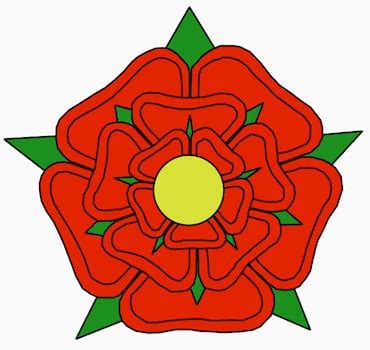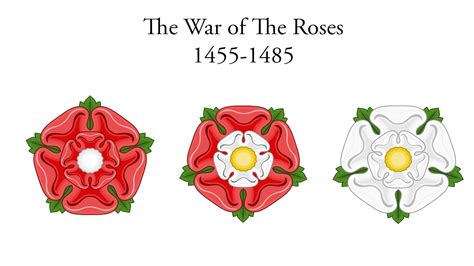england tudor rose | tudor rose wikipedia england tudor rose The Tudor rose, also known as the Union rose, was created by King Henry VII in 1485 as a heraldic emblem, a sign of hope and peace after the lengthy Wars of the Roses. ComputerLand Galerija. Svakim danom 10:00 - 22:00. TC Galerija, Bulevar Vudroa Vilsona 14 II sprat.
[email protected] 063/377-125. Korisnički servis. Tax Free kupovina Odustanak od ugovora Načini plaćanja Uslovi korišćenja Isporuka Prava i obaveze potrosača Reklamacioni postupak Politika privatnosti Vansudski sporovi.
0 · what colour rose was lancaster
1 · wars of the roses explained
2 · tudor roses for garden
3 · tudor rose wikipedia
4 · tudor rose symbol meaning
5 · tudor rose real flower
6 · tudor rose black and white
7 · picture of a tudor rose
Convert Euro to Bulgarian Lev | EUR to BGN Currency Converter. Currency Converter. EUR 1.00 = 1.956 BGN. invert currencies. x. EUR - Euro. BGN - Bulgarian Lev. Conversion Rate (Buy/Sell) BGN/EUR = 1.9558. Last Updated 5/13/2024 7:37:40 AM. en-US. EUR Euro. Country. Eurozone. Region. Europe. Sub-Unit. 1 Euro = .
The Tudor rose, also known as the Union rose, was created by King Henry VII in 1485 as a heraldic emblem, a sign of hope and peace after the lengthy Wars of the Roses.
The Tudor Rose was adopted as the national emblem of England, and was a symbol of peace and unity in the period following the long civil war. The Tudor Rose is a .The Tudor rose represented the very heart of the Tudor dynasty and it became a way of looking forward to future generations and a peaceful kingdom. Henry VII also used Tudor roses, along . A royally crowned Tudor rose. In heraldry, the royal badges of England comprise the . From Cleopatra's rose-petal-adorned boudoir to the famous Tudor Rose, this symbolic flower has for countless centuries dominated poetry, art, literature and religion. Here, .
The Tudor rose (sometimes called the Union rose) is the traditional floral heraldic emblem of England and takes its name and origins from the House of Tudor, which united the House of .The Tudor Rose is the symbol of the Tudor family and is represented by the union of a red and white rose. The red rose being the House of Lancaster and the white the House of York. This .

what colour rose was lancaster
The infamous Tudor Rose is probably one of the most enduring logos of all time, still widely recognisable as the symbol of bringing together the House of Lancaster (red rose) and House .The Tudor rose was used in Queen Elizabeth I's portraits to refer to the Tudor dynasty and the unity it brought to the realm. The rose also had religious connotations, as the medieval symbol .A royally crowned Tudor rose. In heraldry, the royal badges of England comprise the heraldic badges that were used by the monarchs of the Kingdom of England.. Heraldic badges are distinctive to a person or family, similar to the arms and the crest.But unlike them, the badge is not an integral component of a coat of arms, although they can be displayed alongside them.
The Tudor rose badge may appear slipped and crowned: shown as a cutting with a stem and leaves beneath a crown; this badge appears in Nicholas Hilliard's "Pelican Portrait" of Elizabeth I and since an Order in Council (dated 5 November 1800), has served as the royal floral emblem of England. The Tudor rose may also appear dimidiated (cut in . At the end of the war of roses, Tudor rose was accepted by henry vii as s the national flower of England. Among many symbolisms, this flower presents the holy trinity and holy spirit as well. Henry vii married Elizabeth and by connecting the house of York and the house of Lancaster, Tudor rose was created.The Tudor era was the peak of this form of architectural decoration, even throughout Europe into the 16th century. The infamous Tudor Rose is probably one of the most enduring logos of all time, still widely recognisable as the symbol of bringing together the House of Lancaster (red rose) and House of York (White Rose). So, really, the Tudor rose was a piece of propaganda by Henry VII in order to demonstrate that the Wars of the Roses were at an end, and that Henry sat securely on the throne of England. Adrian Ailes has suggested that the red rose “probably owes its popular usage to Henry VII quickly responding to the pre-existing Yorkist white rose in an .
About the Tudor Rose, the National Flower of England. The Tudor Rose has a long history, going back to the end of the 16th-century Wars of the Roses. The red-and-white Tudor Rose is the national flower of England. Its origins go all the way back to the end of the Wars of the Roses. The House of Lancaster used a red or gold rose as an emblem .
Royal Badge of England, including the Tudor Rose. Henry VII. Portcullis, greyhound, crowned Tudor rose, crowned hawthorn bush, red dragon. The portcullis is currently the symbol for parliament, an institution of justice and law, which Henry VII did revolutionise during his reign. The portcullis was also representative of his royal blood through . The Tudor rose badge may appear slipped and crowned: shown as a cutting with a stem and leaves beneath a crown; this badge appears in Nicholas Hilliard's "Pelican Portrait" of Elizabeth I and since an Order in Council (dated 5 November 1800), has served as the royal floral emblem of England. The Tudor rose may also appear dimidiated (cut in .The Tudor Rose is an incredibly prevalent image in political and historical iconography. From Hampton Court Palace to the local pub sign, Tudor Roses can be found on architecture, signage, heraldry -- if you just look, you’ll see them everywhere.If you are at all interested in early modern England (from the mid-15th century, right after the .The Tudor rose was used in Queen Elizabeth I's portraits to refer to the Tudor dynasty and the unity it brought to the realm. The rose also had religious connotations, as the medieval symbol of the Virgin Mary. It was used to allude to Elizabeth, the Virgin Queen, as the secular successor to the Virgin Mary. The pelican: a symbol of motherly love
The House of Tudor (/ ˈ tj uː d ər / TEW-dər) [1] was an English and Welsh dynasty that held the throne of England from 1485 to 1603. [2] They descended from the Tudors of Penmynydd, a Welsh noble family, and Catherine of Valois.The Tudor monarchs ruled the Kingdom of England and the Lordship of Ireland (later the Kingdom of Ireland) for 118 years with five monarchs: . Wars of the Roses (1455–85), in English history, the series of civil wars that preceded the rise of the Tudors. Fought between the houses of Lancaster and York for the English throne, the wars were named years afterward from the supposed badges of the contenders: the white rose of York and the red rose of Lancaster.
When the first Tudor monarch, Henry VII, defeated Richard III and married Elizabeth of York, he created the Tudor Rose out of the red rose of Lancaster and the white rose of York.The Tudor Rose of England. The Wars of the Roses were ended by King Henry VII of England who, upon marrying Elizabeth of York, symbolically but not politically, united the White and Red Roses to create the Tudor Rose, the symbol of the English Monarchy.The Tudor rose (sometimes called the Union rose) is the traditional floral heraldic emblem of England and takes its name and origins from the House of Tudor, which united the House of Lancaster and the House of York. The Tudor rose, also known as the Union rose, was created by King Henry VII in 1485 as a heraldic emblem, a sign of hope and peace after the lengthy Wars of the Roses.
The Tudor Rose was adopted as the national emblem of England, and was a symbol of peace and unity in the period following the long civil war. The Tudor Rose is a common sight in England even.
The Tudor rose represented the very heart of the Tudor dynasty and it became a way of looking forward to future generations and a peaceful kingdom. Henry VII also used Tudor roses, along with the Beaufort portcullis, to decorate the new chapel he commissioned at Westminster Abbey.A royally crowned Tudor rose. In heraldry, the royal badges of England comprise the heraldic badges that were used by the monarchs of the Kingdom of England. Heraldic badges are distinctive to a person or family, similar to the arms and the crest.
From Cleopatra's rose-petal-adorned boudoir to the famous Tudor Rose, this symbolic flower has for countless centuries dominated poetry, art, literature and religion. Here, Oxford academic Nicola Harrison explores its history .The Tudor rose (sometimes called the Union rose) is the traditional floral heraldic emblem of England and takes its name and origins from the House of Tudor, which united the House of Lancaster and the House of York.
The Tudor Rose is the symbol of the Tudor family and is represented by the union of a red and white rose. The red rose being the House of Lancaster and the white the House of York. This union brought to an end the bitter civil war which is commonly referred to .
The infamous Tudor Rose is probably one of the most enduring logos of all time, still widely recognisable as the symbol of bringing together the House of Lancaster (red rose) and House of York (White Rose).

wars of the roses explained
Leveling Consumables in World of Warcraft - World of Warcraft - Icy Veins. Last updated on Oct 05, 2023 at 02:35 by Azortharion 5 comments. This page contains all of the consumables that currently affect XP gains or the speed of leveling for characters in Dragonflight. TABLE OF CONTENTS OF THIS PAGE. 1. Introduction. 2.
england tudor rose|tudor rose wikipedia

























